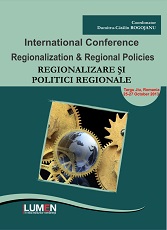Reflectarea modificărilor administrativ-teritoriale ale Romaniei în structura instituţională a Bisericii Ortodoxe
Administrative-territorial modifications of Romania reflected in the institutional structure of the Orthodox Church
Author(s): Iuliu-Marius Morariu
Subject(s): Politics / Political Sciences
Published by: Editura Lumen, Asociatia Lumen
Keywords: Metropolitan; county; bishoporic; deanery; pastoral
Summary/Abstract: Using the bibliography and the literature of speciality, the author presents in this paper the way how Romania's administrative-territorial changes were reflected in the institutional structure of the Orthodox Church. Between the two institutions, one with secular and one with religious profile, always existed collaboration, and the last one, always organized itself respecting the administrative-territorial units of the former. Also in crucial moments of national history, such as the Great Union event, Church had an important role in contributing through organizing elements and by the pastoral ones, at the incorporation of new territories in the structure of the country and the legislative and administrative uniformity of their existing here. The article shows how the Church has always respected their specific geographical areas, organizing metropolises in provinces such as Moldavia, Wallachia, Transylvania, Bessarabia, Bukovina, and the Banat, and was responsible for leading the faithful in counties or nets, organized the archbishops, bishops, or deaneries, n the proper shepherding of Orthodox believers who lived in the country. It also examines how administrative division of Romania is reflected today in the institutional structures of the Orthodox Church, given that in recent years, many dioceses were established, which were added to a metropolitan, and a vicarage (the Ukrainians in Maramureş). The paper fills a gap in Romanian research specialist, because of our knowledge, specialized Romanian literature not know before such a study to analyze this issue.
Book: Regionalizare şi politici regionale
- Page Range: 217-226
- Page Count: 10
- Publication Year: 2014
- Language: Romanian
- Content File-PDF

